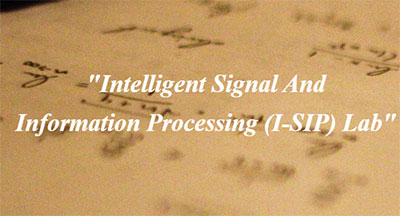IEEE VIP Cup 2018
IEEE VIP Cup 2018: Lung Cancer Radiomics-Tumor Region Segmentation
ORGANIZING COMMITTEE
- Arash Mohammadi, CIISE, Concordia University, Montreal, Canada, arash.mohammadi@concordia.ca
- Amir Asif, ECE, Concordia University, Montreal, Canada, amir.asif@concordia.ca
- Anastasia Oikonomou, Sunnybrook Health Sciences, Toronto, Canada, anastasia.oikonomou@sunnybrook.ca
- Keyvan Farahani, Cancer Imaging Program of the National Cancer Institute (NCI), farahank@mail.nih.gov
- Justin Kirby, Frederick National Laboratory for Cancer Research, kirbyju@mail.nih.gov
PROPOSED CHALLENGE (Download full document)
The volume, variety, and velocity of medical imaging data is exploding, making it impractical for clinicians to properly utilize the available information resources in an efficient fashion. At the same time, interpretation of such large amount of medical imaging data by humans is significantly error prone reducing the possibility of extracting informative data. The ability to process such large amounts of data promises to decipher the un-decoded information within medical images; Develop predictive and prognosis models to design personalized diagnosis; Allow comprehensive study of tumor phenotype, and; Assess tissue heterogeneity for diagnosis of different type of cancers. Recently, there has been a great surge of interest on Radiomics, which refers to the process of extracting and analyzing several semi-quantitative (e.g., attenuation, shape, size, and location) and quantitative features (e.g., wavelet decomposition, histogram, and gray-level intensity) from medical images with the ultimate goal of obtaining predictive or prognostic models. Radiomics workflow, typically, consists of the following four main processing tasks:
(i) Image acquisition/modality;
(ii) Image segmentation;
(iii) Feature extraction and qualification, and;
(iv) Statistical analysis and model building.
The Radiomics features can be extracted from different imaging modalities including Magnetic Resonance Imaging (MRI); Positron Emission Tomography (PET), and; Computed Tomography (CT), therefore, have the capability of providing complementary information for clinical decision making in clinical oncology.
Recent developments and advancement in Signal Processing and Machine Learning solutions have paved the way for emergence of cancer Radiomics. However, effectiveness and accuracy of Signal Processing and Machine Learning solutions in this field heavily rely on availability of segmented tumor region, i.e., prior knowledge of where the tumor locates. Consequently, among the aforementioned four tasks, Segmentation is considered as the initial and the main critical task to further advance cancer Radiomics. The conventional clinical approach towards segmentation is manual annotation of the tumour region, however, it is extremely time consuming, depends on the personal expertises/oipinion of the clinician, and is extensively sensitive to inter-observer variability. To address these critical issues, automatic (semi-automatic) segmentation methods are currently investigated (e.g. image-level tags or bounding boxes) to minimize manual input, increase consistency in labeling the tumor cancer region, and to obtain accurate and acceptable results in comparison to manually labeled data.
In the 2018 VIP-CUP, we propose a challenge for segmentation of Lung Cancer Tumor region based on a data set consisting of pre-treatment Computed Tomography (CT) scans of several (more than 400) patients. For the initial stage of the competition, a subset of the data along with the annotations will be provided as the training set together with a smaller subset for validation purposes. The evaluation will then be performed based on a test set provided closer to the submission deadline. For segmenting tumors, the competition teams can choose to utilize the conventional image processing techniques or deep learning methods however based on the available shallow datasets. 
PARTICIPATION GUIDELINES
Teams satisfying the eligibility criteria outlined below, are invited to participate in the VIP-CUP. View the detailed competition instructions together with the data sources.
Eligibility Criteria: Each team must be composed of: (i) One faculty member (the Supervisor); (ii) At most one graduate student (the Tutor), and; (iii) At least three but no more than ten undergraduates. At least three of the undergraduate team members must be either IEEE Signal Processing Society (SPS) members or SPS student members. Postdocs and research associates are not considered as faculty members. A graduate student is a student having earned at least a 4-year University degree at the time of submission. An undergraduate student is a student without a 4-year degree. Questions about the 2018 VIP-CUP should be directed to Dr. Arash Mohammadi.
IMPORTANT DATES
- May 24, 2018 - Dataset available
- July 31, 2018 - Team registration on IEEE VIP Cup
- August 14, 2018 - Test data released
- August 26, 2018 - Results Submission
- September 8, 2018 - Finalist Teams Announced
- October 7, 2018 - VIP Cup at ICIP in Athens
